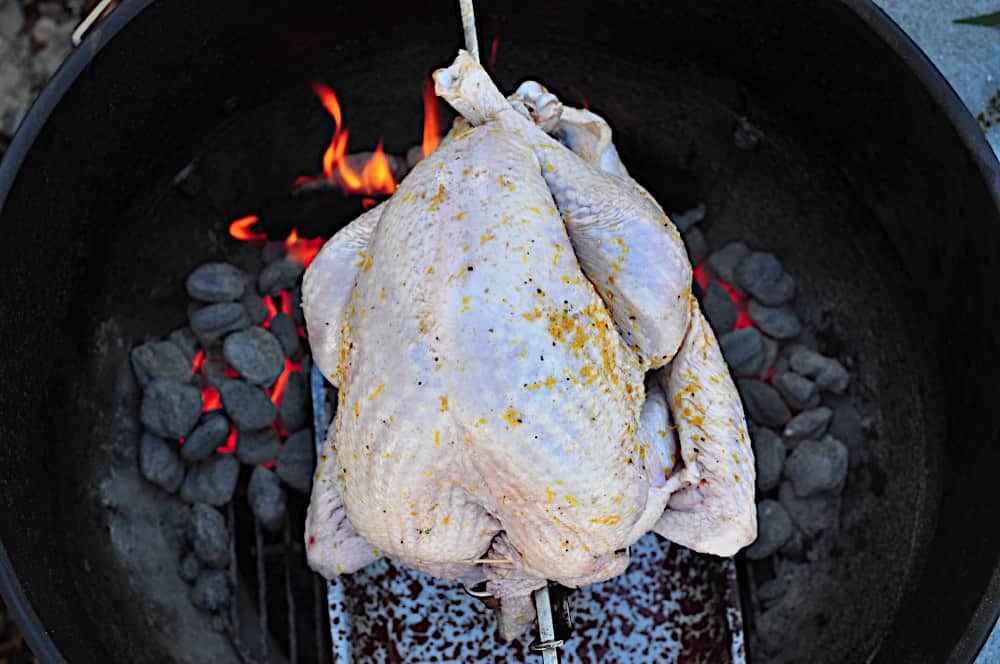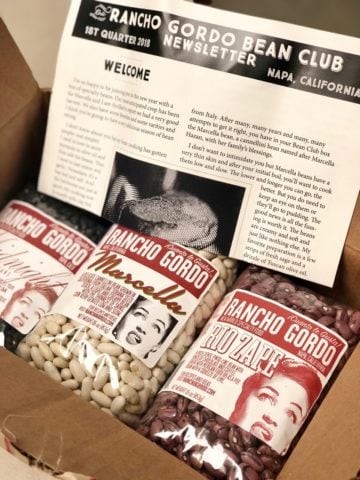My Samoan attorney would like me to say the following: If you are feeding infants, people with compromised immune systems, or people who like to sue penniless food bloggers, you should stick with USDA guidelines and cook turkey breast to 165°F.
165 degrees Fahrenheit for turkey breast. That temperature is burned into my memory. Don't to cook it past 165, because it dries out. Don't cook it less than 165, though! Salmonella lurks around every corner. At 165°F, salmonella is dead, instantly.
But, every now and then, I would see a rogue number. 150. Rick Bayless's Mexican Kitchen recommended 150°F as the proper temperature for turkey breast. I shook my head, assuming it was a misprint. Then Kenji Alt figured out deep fried turkey, and I realized 150 is not a misprint. It is juicier turkey.
Why 165 versus 150? First, the safety side of the issue. The USDA chose 165°F for turkey because, held at that temperature, salmonella is killed in less than ten seconds. If the turkey gets to 165, there is no chance that salmonella will survive; ten seconds of carry over heat will take care of it. But...what they don't mention in their consumer fact sheet is that salmonella is also killed at lower temperatures, if that temperature is held long enough. If a turkey is held at 150°F for 3.8 minutes, salmonella is dead. If I pull my turkey off the grill at 150°F, it will remain that temperature for at least ten minutes due to the thermal mass of the large turkey. I know I'm taking a slight risk here, but as long as I rest my turkey for ten minutes, it will be safe.
[UPDATE 2017-10/22] To eliminate even the small risk of the turkey not staying at 150°F for 3.8 minutes due to thermal mass, cook the turkey until the the internal temperature reaches 150°F, then set a timer for 4 minutes. When those 4 minutes are up, take the turkey off the grill.
Second - why 150 versus 165? Because meat is a combination of protein fibers and water. The moment meat gets to 120°F, or blood-red rare, the protein fibers start to tighten up, squeezing water out of the meat. At 165°F, almost all the water has been squeezed out. Fat and connective tissue can make up for this; they add their own juiciness, and break down at higher temperatures. The leaner meat is, the closer to rare you want to cook it; turkey breast is almost all protein. The problem? Turkey isn't safe cooked medium-rare. It needs 64 minutes at 134°F to kill any potential salmonella.
(Also, medium-rare poultry, still pink in the middle, is kind of unsettling. Even if it was cooked for those 64 minutes, I'm not sure I want to eat it. Unless it is duck breast, then I'll be first in line, with a knife and fork in hand.)
150°F, or medium-well, is the trade off. Not so well done that all the water was squeezed out; cooked long enough that salmonella is not a concern.
I have a new number. 150 is the new 165. Later this week, I put 150 to work with a new Rotisserie Turkey Breast recipe. Stay tuned!
What do you think? Questions? Other ideas? Leave them in the comments section below.
Sources:
- Let's Talk Turkey - A consumer guide to safely roasting a turkey [usda.gov]
- FSIS Salmonella Compliance Guidelines for Small and Very Small Meat and Poultry Establishments that Produce Ready-to-Eat (RTE) Products (Time-Temperature Tables For Cooking Ready-To-Eat Poultry Products) USDA Food Safety and Inspection Service, [PDF, usda.gov]
- How to Sous Vide Steak, Kenji Alt, [seriouseats.com]
*Enjoyed this post? Want to help out DadCooksDinner? Subscribe using your RSS reader or by Email, recommend DadCooksDinner to your friends, or buy something from Amazon.com through the links on this site. Thank you!






Grace says
165 makes too dry a turkey. 150 is best. Nothing worse than a dry turkey and a moist juicy turkey is well worth it.
Brian R. says
Great article, full of beneficial info. Thanks Mike!!
Brian says
I'm planning to smoke a turkey. If I'm aiming for 150, what is the lowest I can safely set my temp control to in order to smoke it as long a step possible and not run the risk of food-borne illness. Unofficially, of course. Im looking for advice not a guarantee that would hold up in court 😉
Mike Vrobel says
I'd say 225°F to 250°F - those are the lowest bbq temperatures I use.
Chad Elvin says
Thanks for the information. Spent 42 years of Thanksgiving thinking of turkey as a really dry bird that is only good when soaked in gravy. I recently started pulling spatch-cock chickens off the kamado grill at 150 degree breasts with great results, so your article scratched my itch. Spatch-cocked my first turkey tonight (13 lbs) on the kamado, pulled at 153 breast and it carried to 162. Thighs maxed at 183. The most incredible/moist turkey I've ever had. I think I will take the bird off the grill at around 148 next time to target a 155 carry over. Pretty sure my folks will put me on turkey duty next year now. Thanks again.
John Panagako says
165 is the right temperature for lawyers, not for cooks. 150F is better but still will climb higher once removed from the residual heat The other problem is breast meat cooks faster so always cook the first half of the time with the back side up rather than breast side up, then turn over. I always use a bag anyway as its much faster and I am a little impatient. I can always torch the skin if I want it crispy.
Grace says
LOL! Loved
165 is the right temperature for lawyers, not for cooks!!!!
Tatoosh says
I used the 150F target for turkey today - first time. It came out fantastic! The juiciest turkey I've every produced. Now, I'm smoking my turkey on a Weber kettle with special insert to hold the charcoal off to the side. Heat is primarily coming from on side and from the top down.
We cooked until the breast said 150F in multiple spots and the legs said 165F. Once we hit those numbers, we set a timer and ran for 5 more minutes to be positive the turkey stayed at the target temp long enough to be very safe. Having done sous vide cooking before, I'm quite comfortable with this approach to time and temps.
Using a matching roasting rack, it was much easier to flip the turkey so the breast side was down for the last hour or so of the cook. Since heat was coming from the top down, I wanted the breast on the bottom to allow gravity to work on any moisture and the butter we injected.
So it was a super duper turkey and exactly what I plan to do next year again!
Mike V @ DadCooksDinner says
I have started the bird breast down, and it does help. But a turkey is really hard to flip, so I gave up on it, and trust the ice to cool down the breast enough.
Chris Lukowski says
Great info, thanks! Lastly, have you ever bothered to roast the bird breast side down for the first 30 minutes like the Judy Bird article advises? That sounds hot and messy in all the wrong ways. :oD
Mike V @ DadCooksDinner says
I want the thighs at least 170*F, preferably 180*F.
I use a variation on the "ice packs on the breast" to keep the turkey breast chilled - I take the bird out of the refrigerator two hours ahead of time (sometimes three hours), and put a gallon ziploc bag full of ice on the breast, making sure it's not touching the drumsticks. Like this: http://2.bp.blogspot.com/-R4EvetcTfwQ/UJ-S0eCRjFI/AAAAAAAAHmE/Mm9bSCJZm_g/s320/DSC_1104.JPG
Also, I'm usually grilling a bird, so I set up all the heat in the grill on the leg side, to cook them more. My oven is hotter in the back, so I'm going to put my bird in the oven leg first this year, to try to simulate the same effect.
Chris Lukowski says
Ah, but how to solve the conundrum of pulling that breast meat at the lower temperature without undercooking the dark meat? Last year I verified all parts of the bird were at a "safe" temperature but the thigh meat was still pink around the bone which caused people to revolt. First, what temperature does the thigh have to get to before the pink is gone? Second, what's your preferred method of keeping the breast meat temps low enough on an intact bird (non-butterflied) while still giving the dark meat enough time to properly get done? I've heard of everything from ice packs on the breast meat pre-roast, rotating the pan so the legs are pointing to the back of the oven, roasting the bird upside down, to Alton Brown's "turkey triangle" of aluminum foil over the breast. What's worked for you?